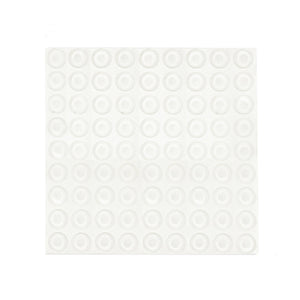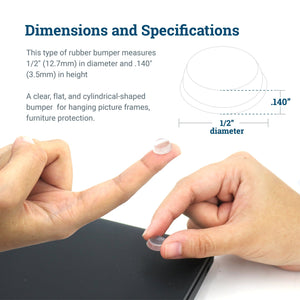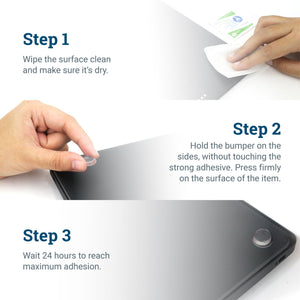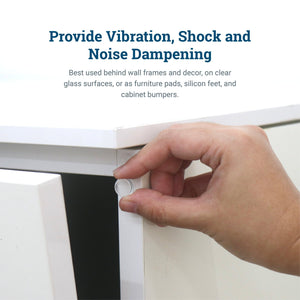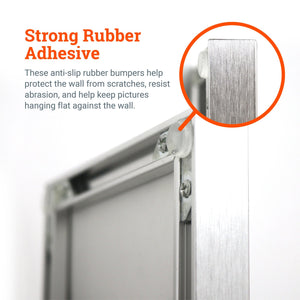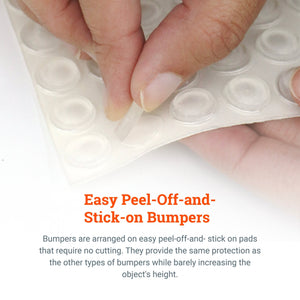About 1/2" Diameter .140" Height Clear Rubber Bumper
-
Aclear, flat, and cylindrical-shaped bumper for hanging picture frames, furniture protection
-
Best used on wood frames, lids, cabinets, and other home furniture. They are wall protectors, cabinet door silencers, and furniture feet
-
This type of rubber bumper measures 1/2" (12.7mm) in diameter and .140" (3.5mm) in height
-
These anti-slip rubber bumpers help protect the wall from scratches, resist abrasion, and help keep pictures hanging flat against the wall
- They provide the same protection as the other types of bumpers while barely increasing the object's height
- High-quality, 100% polyurethane bumpers with no added plasticizers, oils or fillers. Non-staining, non-marring, crack-resistant and resilient.
Description
All of our Picture Frame Rubber Bumpers are made of 100% polyurethane. No plasticizers, oils, or fillers are added during their manufacture as is often the case with lower-end bumper products. They are non-staining and non-marring; crack resistant and resilient.
Bumpers are supplied "kiss-cut" on protective peel & stick backing pads of 25 bumpers per pad, ready to use.
To apply, simply peel off individual bumpers from the backing pad as needed and apply to the bottom corners of the backside of your frame--no nails, screws or drilling required.
Instructions
- Lay the frame face down on a blanket or soft surface.
- The bumper application area on the back side of the frame should be smooth, clean, free of debris, dry, not greasy or oily.
- You will need to place one bumper at each bottom corner of the frame only--bumpers are not needed at the top of the frame.
- For metal frames, a dome-style rubber bumper should be applied on top of the steel corner connecting plate at each of the frame's bottom corners.
- For wood frames, a flat-style rubber bumper should be applied close to but not over the edge of the frame at each bottom corner.
- If more standoff distance from the wall is required, use our higher cylindrical rubber bumper .
- Pick rubber bumpers from the pad by grasping them on the sides between thumb and forefinger. Do not touch the bumper's adhesive surface.
- Press bumpers firmly into place. Once a bumper is in place, do not attempt to reposition it--this will ruin the adhesive bond.
- Frames may be hung immediately, but there is a 24-hour dwell time after bumper application before maximum adhesion is reached.
